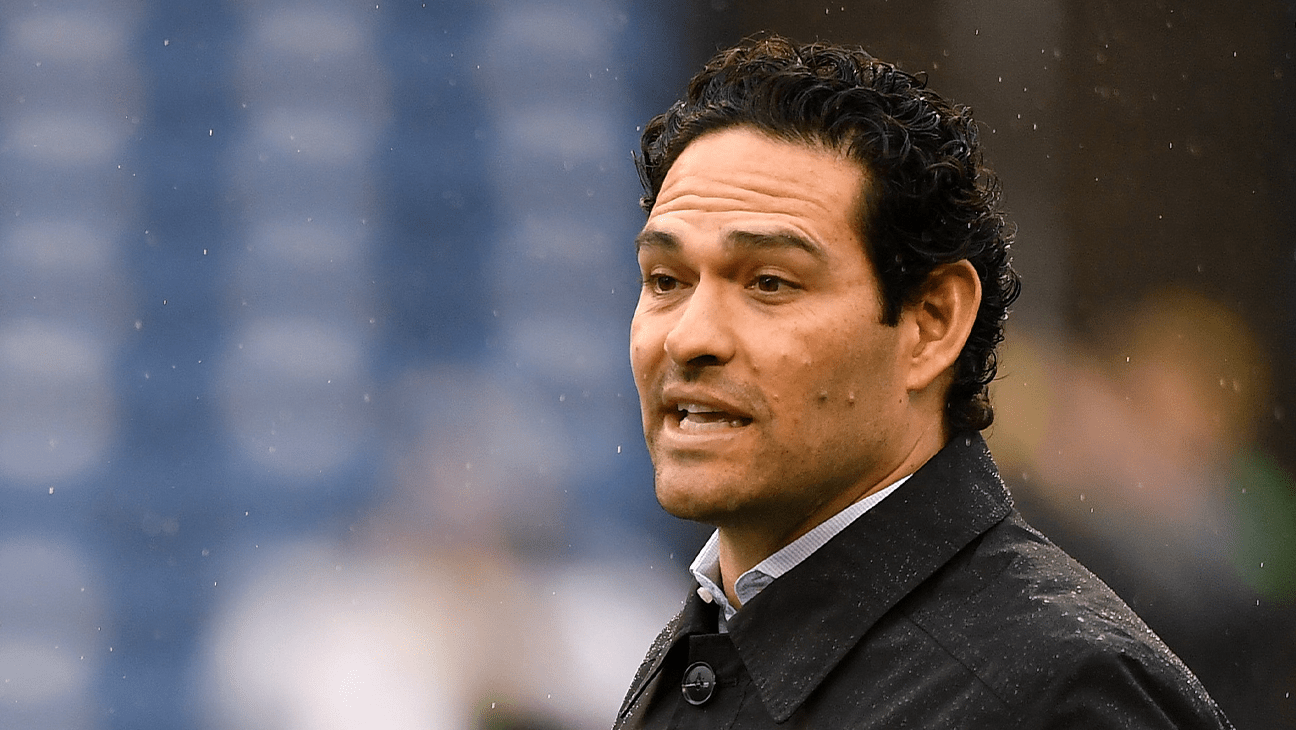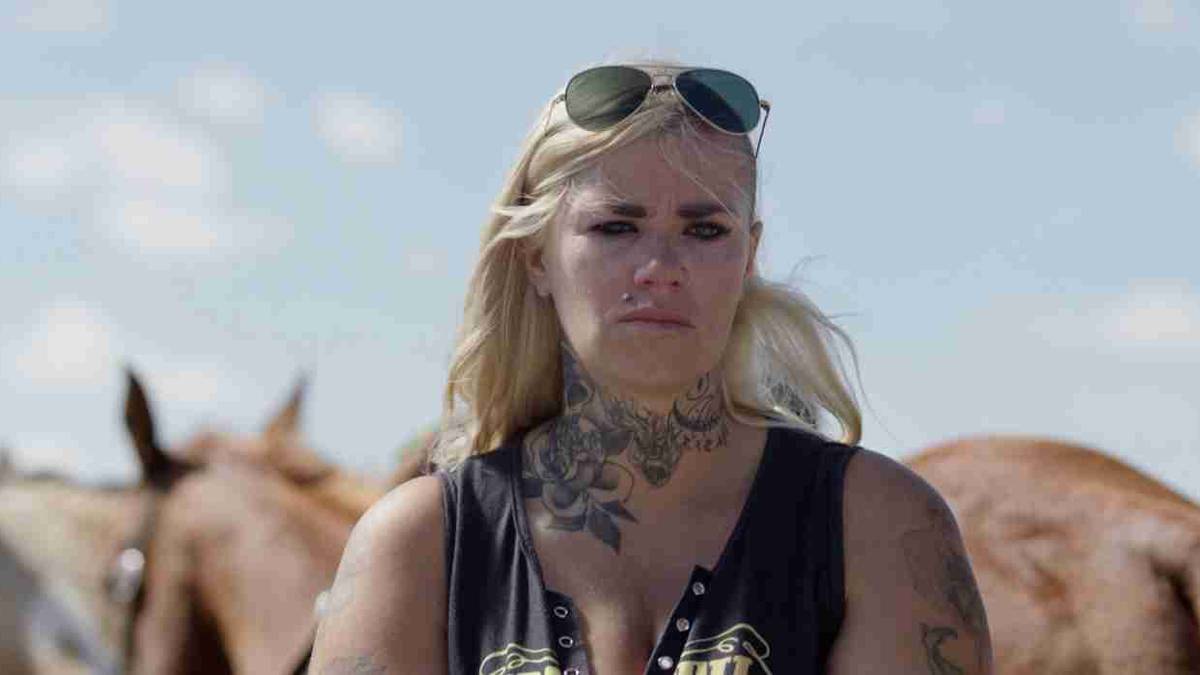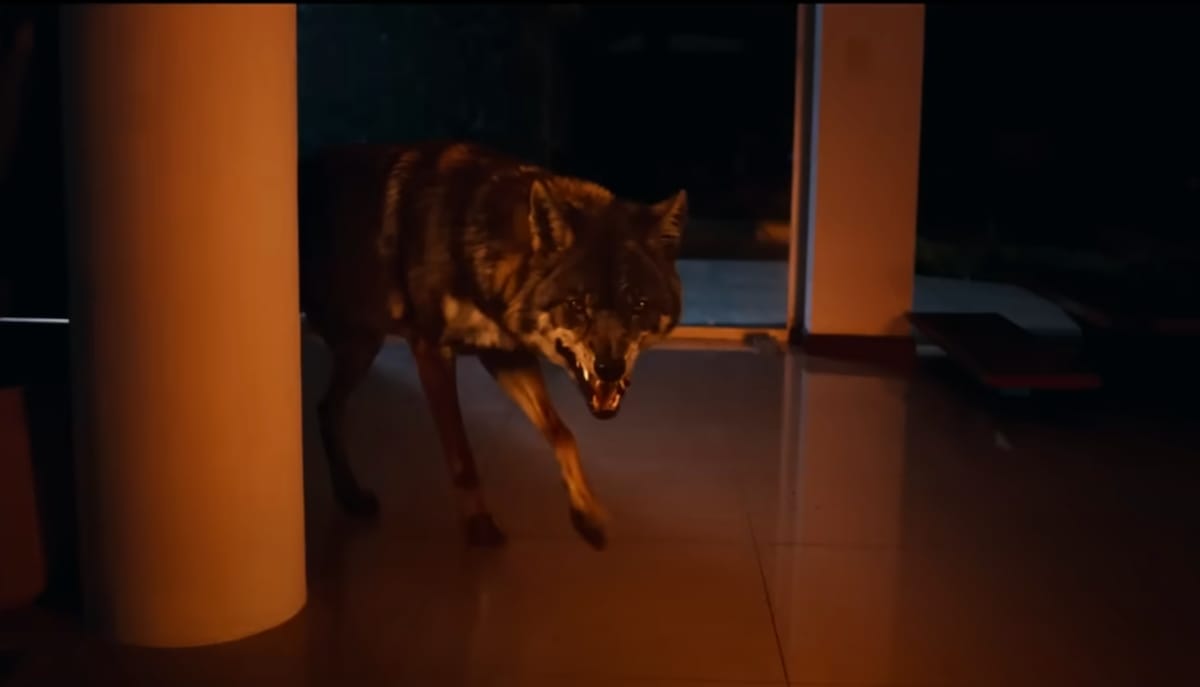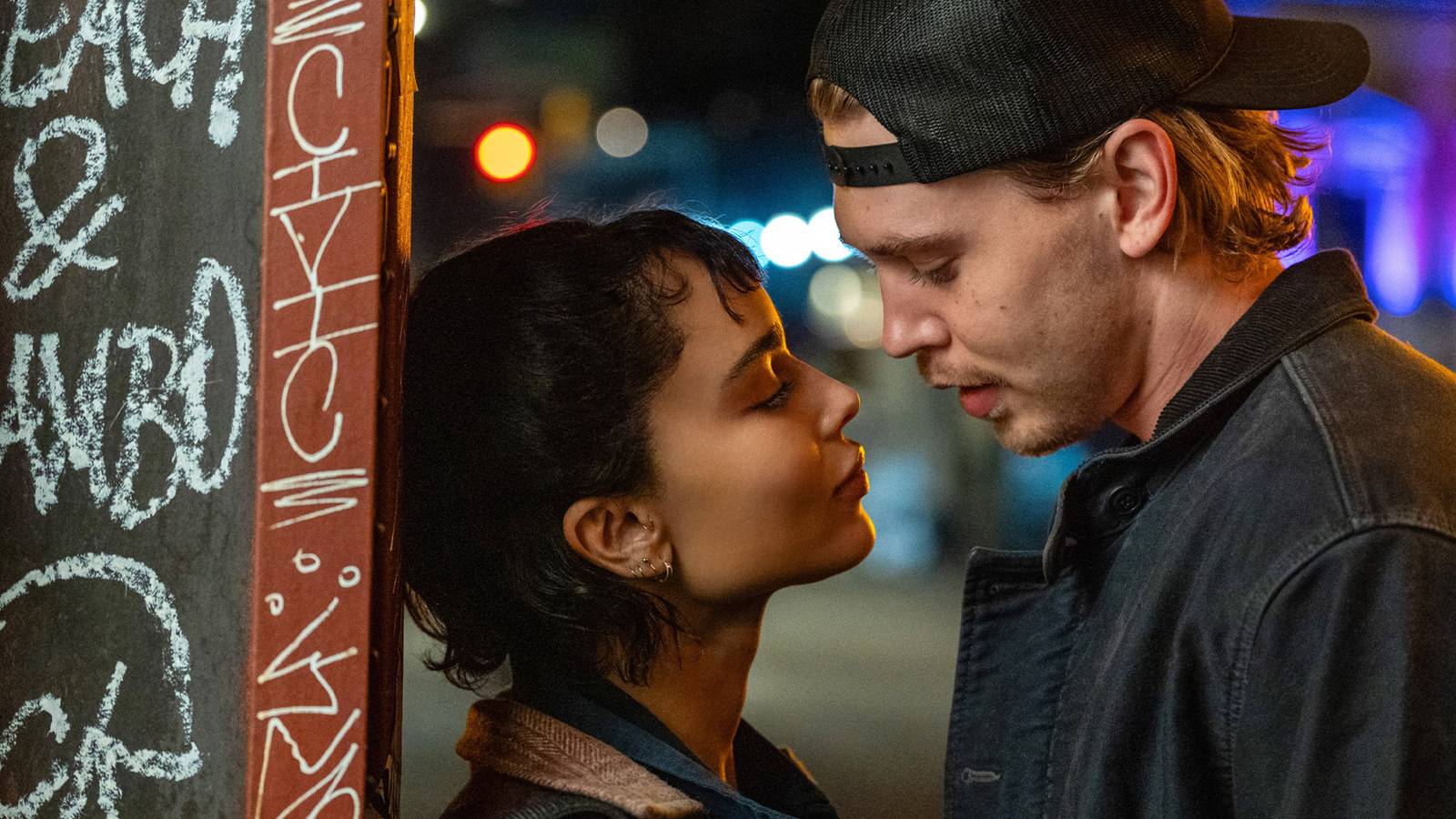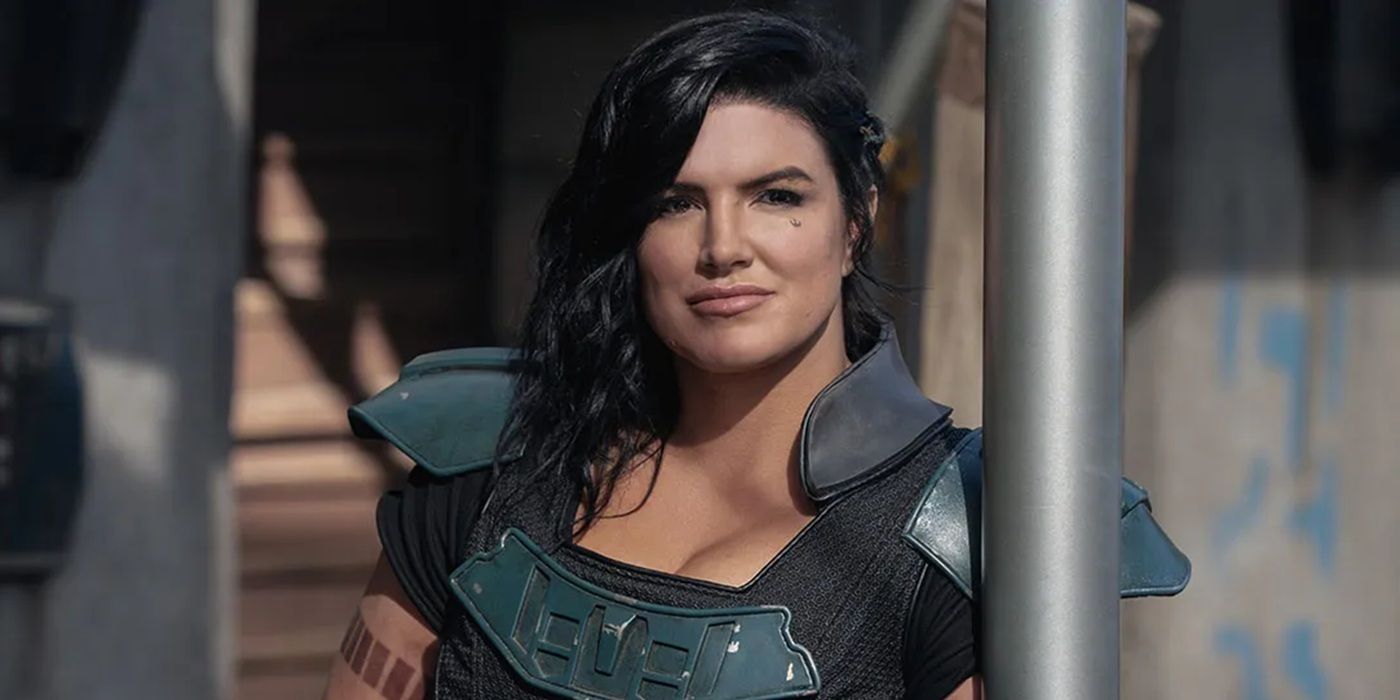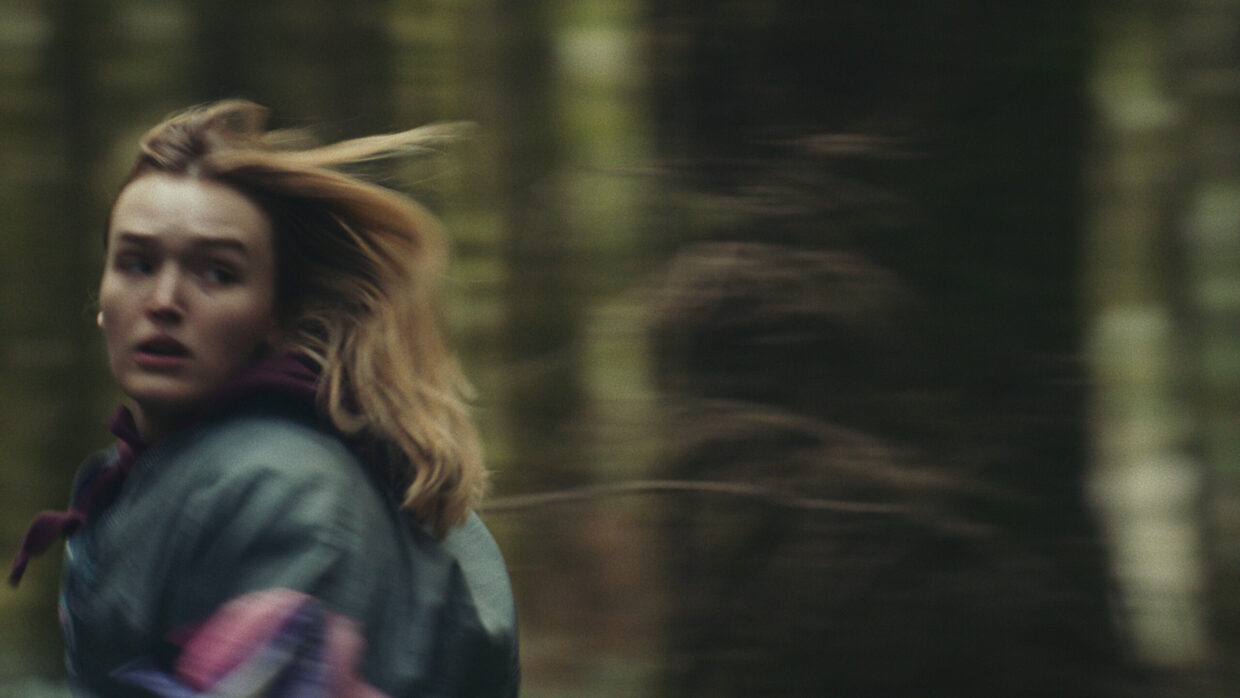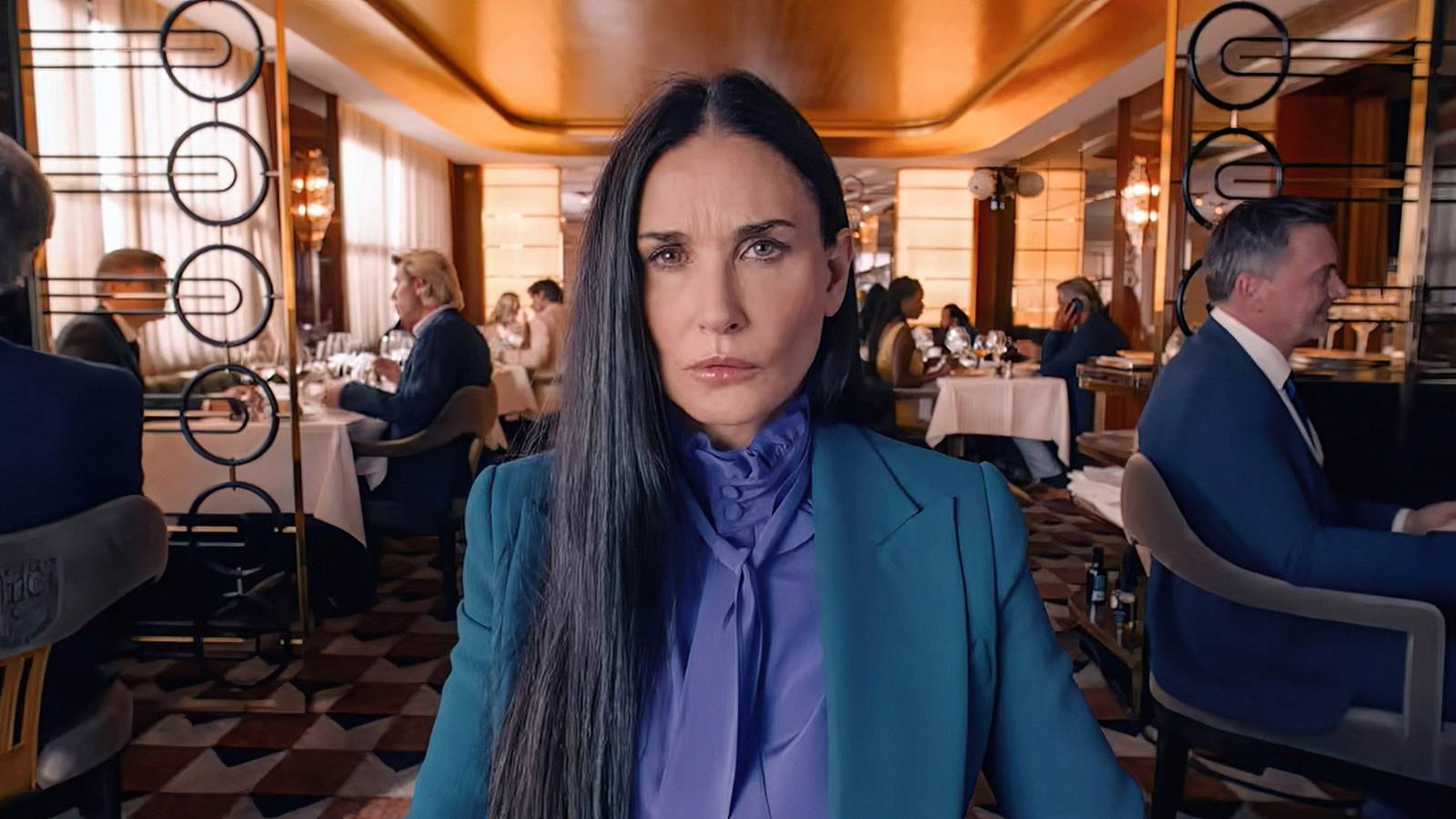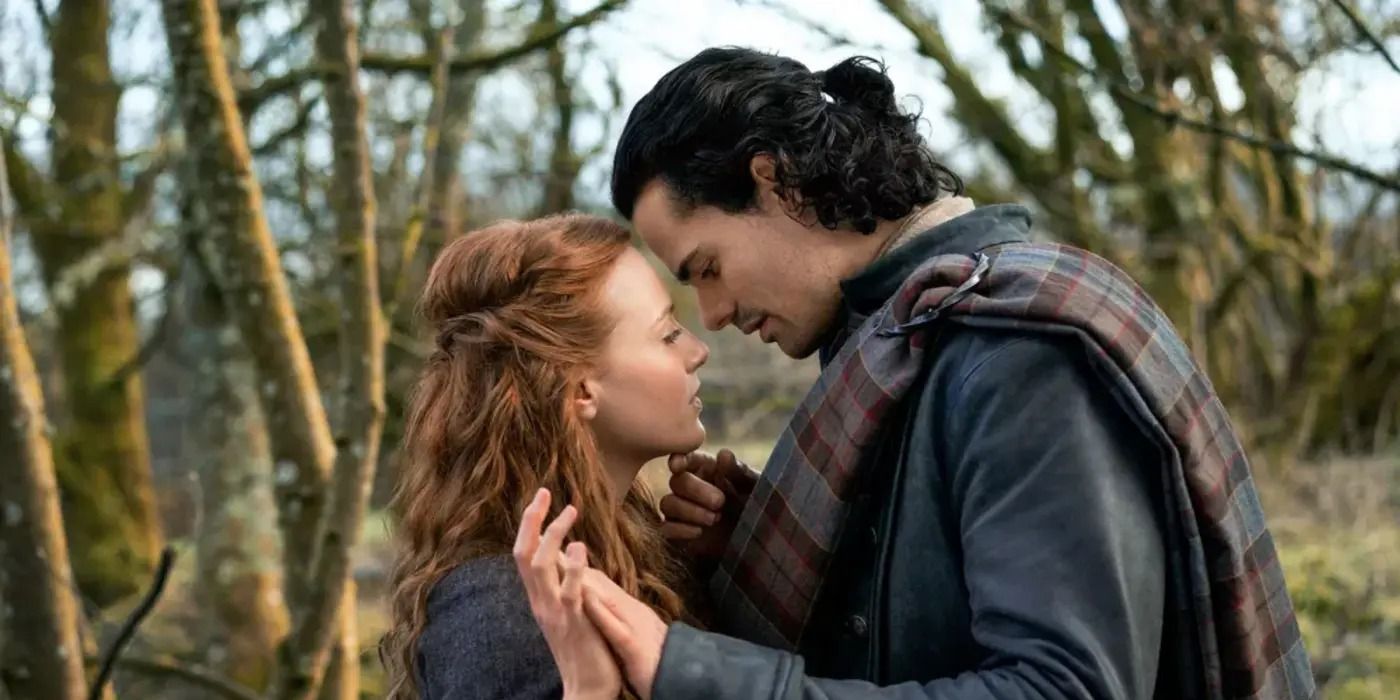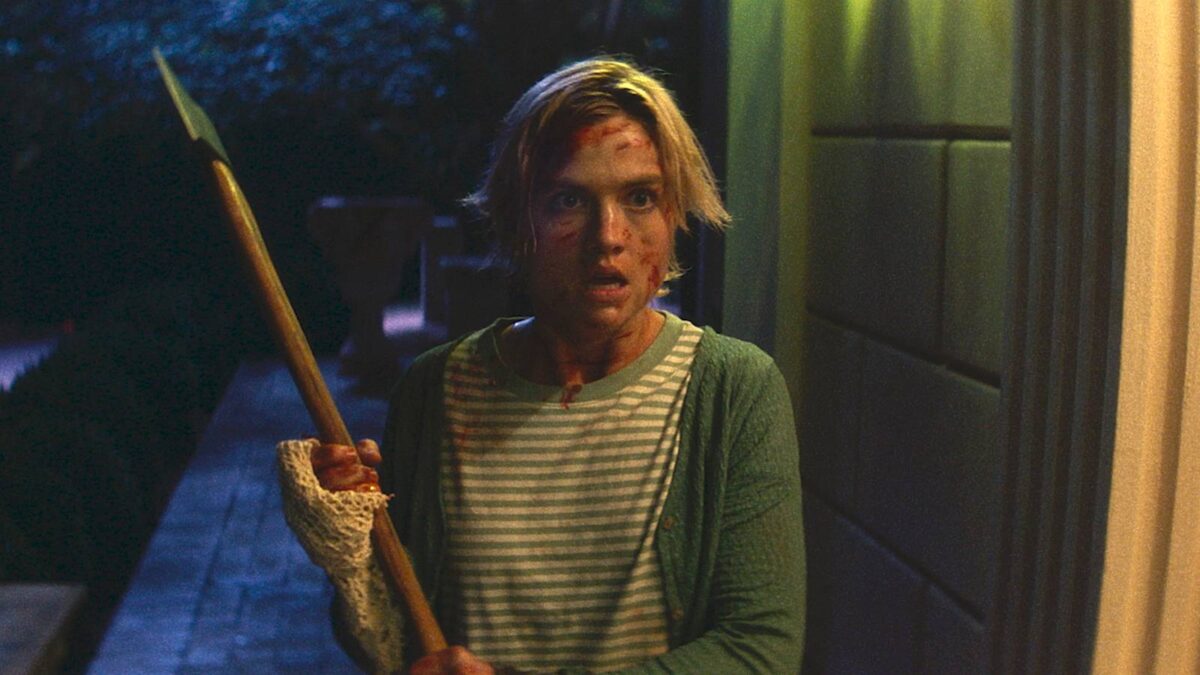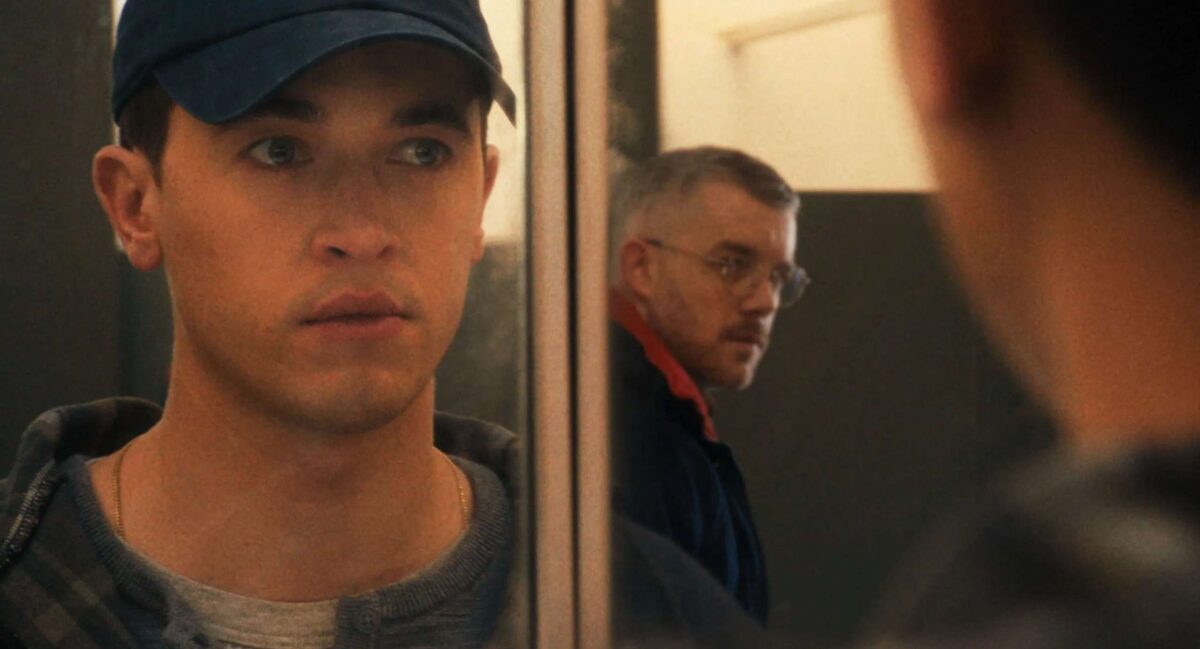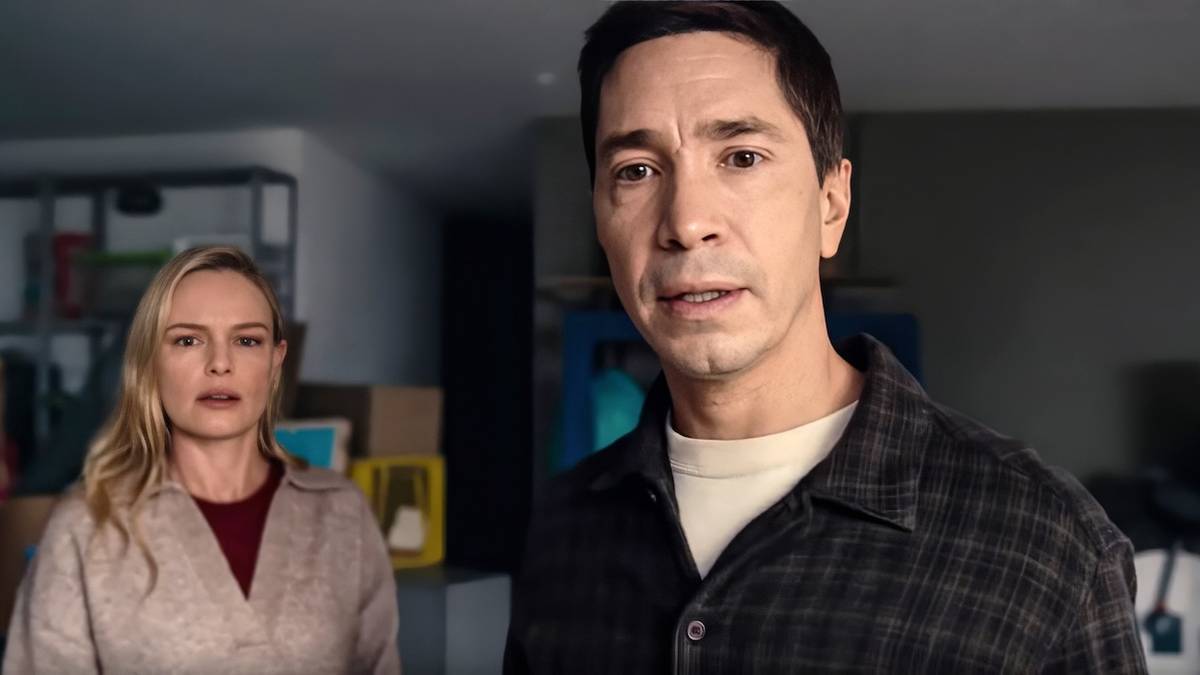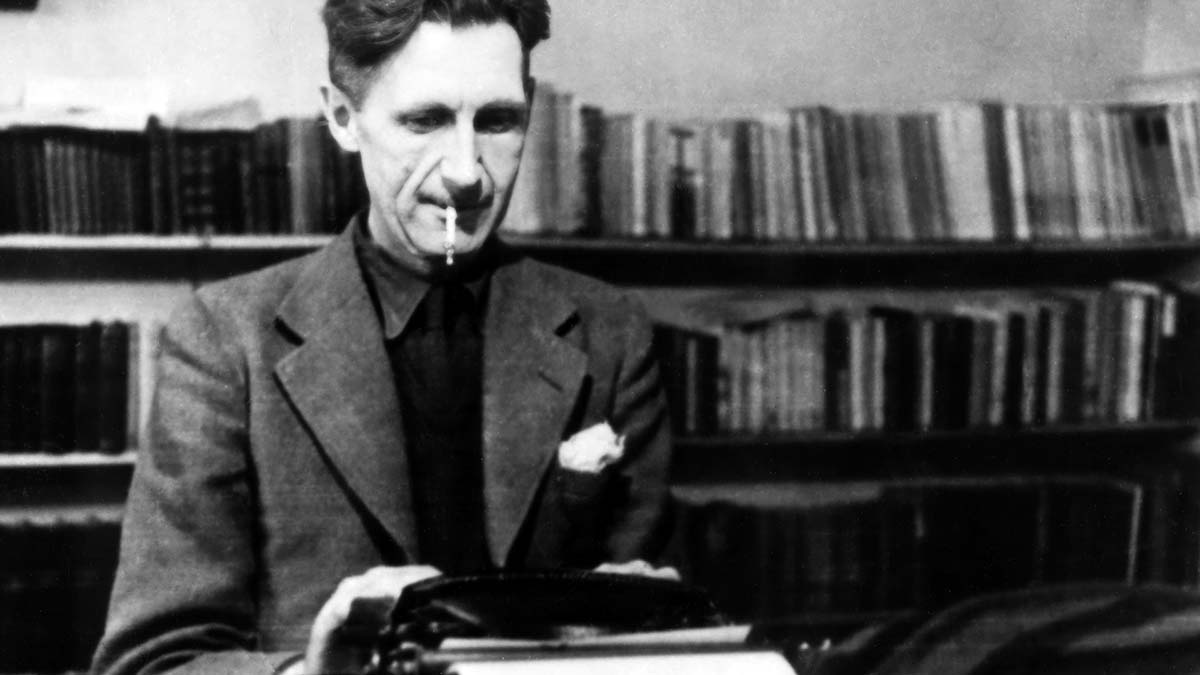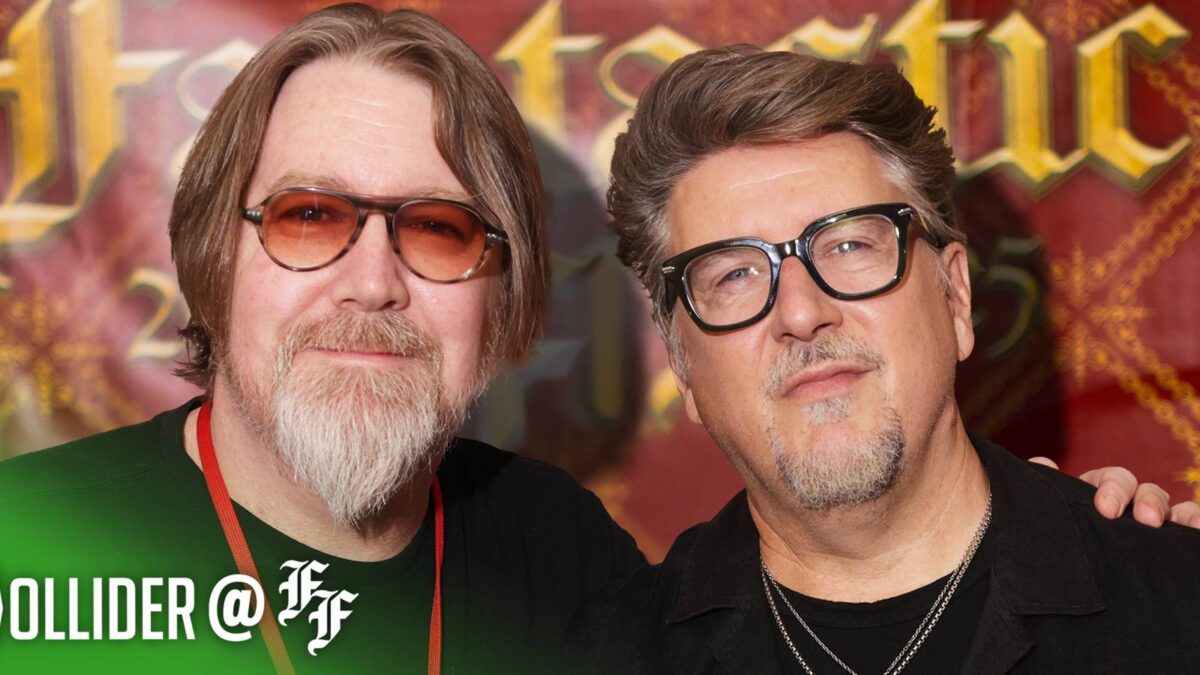
We Made a ‘Nightmare on Elm Street’ Movie
Oct 8, 2025
Summary
Collider’s Perri Nemiroff talks with Scott Derrickson and C. Robert Cargill for Black Phone 2 at Fantastic Fest 2025.
The sequel enters a dream world when the Grabber makes a call from hell, with family secrets fueling the mystery.
The pair discuss filming Super 8, casting Anna Lore, Madeleine McGraw and Mason Thames’ evolving relationship and powers, and more.
Four years ago, Finn (Mason Thames) killed his abductor and escaped, becoming the only survivor of Ethan Hawke’s Grabber, but true evil transcends death. In Black Phone 2, Gwen (Madeleine McGraw) begins to receive calls in her dreams from the black phone and experiences disturbing visions that lead her and Finn to a snowed-in winter camp and a shocking discovery about the Grabber and their own family’s past. The sequel is directed by Scott Derrickson, who co-wrote the screenplay with longtime collaborator C. Robert Cargill, continuing the nightmare they first brought to screens in 2021, adapted from Joe Hill’s short story of the same name from his 2005 anthology, 20th Century Ghosts. Thames and McGraw return as brother and sister Finn and Gwen, with Hawke also reprising his role of the Grabber. At Fantastic Fest 2025, Collider’s Perri Nemiroff sat down with Derrickson and Cargill to talk about the idea that spurred Black Phone 2 forward, the scene that took three reshoots to nail, and the hardest part of the film to get right. The pair also briefly discuss the possibility of a third installment to the Grabber’s story.
The Call Is Coming from… Hell?
Joe Hill thought this killer ‘Black Phone 2’ idea might be dumb.
Ethan Hawke wearing a devil mask and menacing Mason Thames in a phone booth in The-Black-Phone-2Image via Universal Pictures
PERRI NEMIROFF: I have a bunch of follow-ups from our last chat, which happened when I had only seen the first trailer. The first thing on my list is what you were telling me about Joe Hill’s idea for Black Phone 2. Specifically, what you said was that you were looking for an idea, and Joe emailed you a pitch. Some of it you didn’t respond to, but there was an idea within that email that you thought was fantastic that you had never heard of. So now I want to know, in the movie I just saw, what is that specific idea? SCOTT DERRICKSON: The central idea was the idea that the grabber had killed, Hope, their mother, and that the backstory of the movie would be sort of an unveiling and a reveal of how that had occurred. So that was something I’d never, never thought about. And what I liked about it was pitched it to you first, and then, Carter liked it. So then he emailed me. What I liked about it was the fact that it allowed for the movie to be a ghost story. You could create a narrative that tonally is very different, sort of bringing you into the movie, not as a serial killer movie, but as, a mystery ghost story. And then there would be high emotional stakes and and I thought that reveal would really matter when it happened, I hope. But that’s a big spoiler. C. ROBERT CARGILL: There’s a central tenet to when he called me up, because he called me, and then I said, “You gotta talk to Scott.” He emailed Scott because he wanted it to all come out, just like, “Okay, here are all my ideas.” But that core idea was, he was just like, “I have the dumbest idea,” and I’m like, “We love dumb ideas. Let’s go. What’s the dumb idea?” And he goes, “A phone rings and Finney answers, and it’s the Grabber calling him from hell.” He had this additional thing on it that we’ve kind of done, where now the mask is his face in hell. But there is no Grabber without the mask; that is who he is. We were just like, “ Fuck yes.” Did you mention that the role of their mother was written for Anna Lore last night? DERRICKSON: She was the person I had in mind all the time, but we try not to write for somebody specifically, or to do so very loosely. So as soon as that came up, I thought she’d be perfect for it, but Cargill didn’t know her at that time. CARGILL: Oh no, I did. We worked on Valentine together. DERRICKSON: Of course. Yes, that’s right. But I always had her in mind and hoped that she would do it. It makes me really happy to see her have the one-two punch this year with this and Final Destination [Bloodlines]. CARGILL: She’s close friends with Scott’s wife, and so we worked with her in the past. We’ve just hung out with her numerous times, and so when he’s like, “I want Anna for this,” I was like, “Of course. Yes.”
Anna Lore screaming in a garden in Final Destination Bloodlines.Image via Warner Bros.
So good. Sign me up for anything she’s in. CARGILL: And then she really, really looks like Maddie. They look like mother and daughter in a way that when Scott pointed it out, I was like, “Oh man, that’s genius.” That was Scott’s stroke of genius with the casting. DERRICKSON: She also has to play a character with a pretty big age gap. Anna can look so young in the opening. She does look like she’s 18 or 19 years old, and then she needs to play a mother many years later in the movie, when you see her. That was also something, that there aren’t a lot of actresses that can fit the bill there. Yeah, I had that actual discussion with somebody else last night about how impressed we were with that. CARGILL: You see her next to Jeremy Davies, and it’s like, “Yeah, I see it,” even though you just saw her 20 minutes ago in a phone booth looking, like you said, 19 years old. DERRICKSON: By the way, no visual effects on her at all. She can just look that different. That’s also a road I could go down and discuss for quite a while! CARGILL: Yeah. You know what? Fuck her. Fuck her for being so genetically awesome. [Laughs] You said it, not me! Here’s one other thing I really wanted to follow up on with both of you that you had brought up in our last conversation. You said that the screenplay that you guys wrote was very confusing to a lot of people. I was revisiting the interview having seen the movie, and I’m like, what was confusing? DERRICKSON: What was confusing was the fact that you were jumping back and forth so much between the dream world and reality. So every time you got a slug line that says, “Dream world, Super 8, you’re describing, and it goes back and forth so many times.” The structure of the narrative is also kind of all over the place. You’re getting pieces of information from the history in random ways, so when you read it all the way through, it’s very difficult to take it in on the page. Even when we were in prep, I would get lost on things sometimes. I’d be like, “No, wait a minute. Does this take place before that scene or after that scene?” It was a bit of a puzzle. I remember my production designer, Patti Podesta, about three weeks before we finished shooting, she just said, “Scott, I gotta just tell you, I think you’re the only person who understands the movie you’re making,” because it was technically so complicated. I would tell people what to do, and everybody did it, but it was a hard movie on the page to grasp what was visually represented on the screen. CARGILL: Yeah, you’re talking about a movie in which we were operating with three very different cameras to capture very different parts of the movie to visually represent it. So sometimes you’d be like, “Okay, wait, where in the movie are we? Which camera are we using? Which film stock are we using?” There are so many moving parts. It’s one of those things that there’s a handful of people on the planet that could make that work, and Scott is one of them.
One ‘Black Phone 2’ Scene Had to Be Reshot Three Times
The filmmakers discuss the volatile nature of Super 8.
Finn tries to wake up a sleeping Gwen in a bunk bed covered in writing, with a girl watching nearby.Image via Universal Pictures
I’ll dig into the Super 8 of it all now. Can you tell me a little bit about figuring out the right visual language so that it not only feels like an expansion of how it’s used in the first film, but it also almost feels like another step from Sinister to Black Phone to Black Phone 2? DERRICKSON: It’s definitely an evolution of those films stylistically, you know? And rather than drawing on other films, this is the first time I’ve sort of drawn on my own past visual style and tried to evolve it into something that I haven’t seen before. I have not seen a movie in a theater, or maybe ever, that has this much Super 8 material in it. Super 8 is really dangerous-feeling, and it’s actually dangerous to work with. It’s very volatile. Is it underexposed? Is it overexposed? It flutters in the gate. The aberrations are part of the beauty of it, and the dangerousness of it. CARGILL: An entire reel will just be lost because it won’t develop properly, so we’ll have to shoot it again. Are you saying that as a hypothetical? DERRICKSON: No, that really happened. CARGILL: Oh no, no, no, I wasn’t saying that as a hypothetical. DERRICKSON: We have one scene in the movie we had to reshoot three times because the Super 8 was so volatile. But it was worth it, because it’s hard these days to go into a cinema and have a visual experience where you’re looking at something that you don’t feel like you’ve seen before. It just doesn’t look like other movies, and that’s very exciting for me as a film viewer when that happens. I felt like part of the excitement of the movie was going to be the audiovisual power of the medium itself, and that that could be used to really be a storytelling device separating the dream world from reality. Super 8 always feels very dangerous. It ups the tension. But can you tell me a little bit about weaving that way of filming into Gwen’s journey thematically, so that it’s also evolving in a way that supports where you want to take her in the story? DERRICKSON: That’s actually a script decision that we made. I remember calling Cargill one time when we were sort of playing with some of the horror scenes early on, and I said, “I think that maybe we should have all of the terror of this movie in this dream world.” That was a hard decision to make, and Cargill immediately was like, “Oh, I thought that all along.” And I was like, “Okay, well, I was slow to the process.” But making that decision meant that I really did have to create worlds here. And for Gwen, she is this character with these ethereal gifts, and to be able to give her a visual space where, when you see it in her, you know that you’re inside of her own mind to a degree. You know that you’re inside a space that she occupies mentally and spiritually. That became very challenging for me because every time that we were in there, I needed to feel not an intellectual idea, but I needed to feel like her. It needed to feel like her world. The seamlessness is hopefully that you don’t have to experience it intellectually, you just experience it viscerally, and it makes sense to you as it’s happening.
Creating a Dream World for ‘Black Phone 2’
And how they developed the rules on the page and screen.
Gwen, with short hair in pajamas, hiding around a corner from the Grabber coming her way with an axe.Image via Universal Pictures
I have so many follow-up questions. One of the first ones that crossed my mind, just because you emphasized the dream world, and obviously a lot of folks out there are comparing this movie to Nightmare on Elm Street, which I think is very applicable. How do you approach embracing that kind of comparison rather than pushing it away? CARGILL: There’s a phrase I like to use, and I use it quite often: “Turning into the skid.” Sometimes when you’re sliding on ice or water, you turn into the skid instead of away from it, and that’s how you right the car. That’s what you do with things like this. The minute we realized we were bumping up against material that had been done in movies that we love, we were just like, “Why try to ignore that and pretend we’re something else, and instead just turn into the skid and be like, ‘We love Nightmare on Elm Street. You love Nightmare on Elm Street. We’re not going to steal from Wes [Craven], but we will do our own variant on this with the rules that we set up in the previous movie.’” So, it’s like any similarities are a good thing for this audience. As I was saying in another interview last night, one of the great things about horror audiences is they are so film literate and they know their movies inside and out and chapter and verse, and so you’re not going to pull it over on them and be like, “Hey, we made a Nightmare on Elm Street movie that you don’t recognize.” No, they’re going to know. So it’s like, “Well, let’s go for it, but let’s also make sure we honor that material as well by not stealing from it.” I think one of the best things you do is that you do honor it, but you honor it within this really rich world that you two have created, with Joe, of course. I wanted to lean into that a little bit. I believe you brought this up at the Q&A last night, but I forget the exact verbiage you used. Something about overwriting rules, or something to that effect. CARGILL: I overwrite. Like my other job, I’m a novelist, and so I love to overwrite, so then Scott’s first job when he’s rewriting me is cutting out, like, six pages, and just being like, “Let’s cut this down to the bone and make it work.” But I always like to overwrite with the rules there so that we both know what we’re playing with, and then the secret with writing in general is that you then pare that away and pare that away to exactly the point that the audience understands it, but doesn’t ever feel like you’re sitting there and giving them a lecture on how the movie works. That’s always the point at which the movie grinds to a halt is the point where someone looks in the camera and goes, “Let me explain dreaming to you. Let me explain the rules of Inception.” That’s the one criticism of Inception that functions is that 70% of that movie is explaining the other 30% to you. DERRICKSON: I don’t have that criticism. CARGILL: Oh, love the movie. But the point is that you’re always trying to avoid that. So, I like to overwrite, and then we cut down and get to that point where the audience is like, “Oh, this is everything I needed to know.” To follow up on that a little, can you each give me an example of a rule that you knew had to be rather explicit in the movie, but then also maybe a rule that you developed that you didn’t need to flat out mention in the film, but we could still feel informing the film overall and the world that you’re creating? CARGILL: One of the big ones is that one of the great things about this story is it’s about the kids learning that this is not something happening to them, this is something that is happening within them that’s connected. So, having the phone ring and not having both of them hear it, but only the one who’s getting the call, only the one who’s mentally reaching out. So we always had to make sure we knew what that was, because there is no real phone ringing. It’s just the medium with which they’re communicating with the dead, and it’s how their brain processes it. So yeah, we always were making sure that someone would hear it ringing, but it was never both of them because this isn’t some shared thing. They just both have the same abilities from their mom. Also in that vein, Finn is rejecting it, and so he’s not having all the experiences Gwen is having because Gwen is open to it. We’re seeing two people with the same gifts, and one person trying to shut it down while the other person is being open to it, which is why, as she goes through the movie, she starts being able to do things that Finn can do. Because it’s not that they have two separate abilities, it’s that they both developed them in different ways, and he’s not furthering his learning of that while she is. That’s why she, by the end of the movie, would be a much more competent paranormal investigator than her brother would be.
Would Anyone Want ‘Black Phone 3’?
The pair also discuss Madeleine McGraw and Mason Thames’ on and off-screen relationship.
The Grabber with an icy mask, tilting his head and holding an axe down by his side in Black Phone 2.Image via Universal Pictures
This is the greediest follow-up question, but you explain that and I’m sitting here like, “I want more.” I assume you see the potential in a Black Phone 3, right? CARGILL: Would anyone want that? I don’t know. [Laughs] DERRICKSON: No one’s brought that up to me. CARGILL: No, that’s the first time we’ve heard it. Hey, I hope other people would like that. I want to see you expand, especially with the two of them. I thought they were phenomenal in the first film, but when you see what they’re able to do at a different stage of life here, it really is something extra special, so I would love to see them continue in these roles as well. Leaning into them in particular, can you tell me something that you saw Madeleine and Mason do on this set that made the two of you stop and go, “I thought I knew how powerful this scene could be, but you two just took it to another level?” DERRICKSON: I mean, the thing about the two of them is that they are so comfortable around each other and know each other so well that it was much more about feeling continually surprised at how easily they stepped into a scene and felt like brother and sister, and felt like they had real history, because they do. They’ve known each other for years now, since the first film. For me, it’s the more emotional moments when they’re leaning on each other. I think that for me, the greatest performance moment that Maddie has is actually after the first nightmare that she has when she wakes up. She is really crying, and she is really distraught, and she had to get herself into a very dark place, which is painful for her as an actress. Some people can do that on command and it doesn’t affect them; it really affects her. So when I ask her to do something like that, I’m aware that I’m extracting real emotional energy and power from a person for the sake of the movie. The way that in that scene, and to a lesser degree in the basement when she wakes up, but when she wakes up in the dorm, the way Mason is with her and the way he is calming her and talking to her and telling her she’s okay, but then when she sort of folds in on him, and the fear then sets in, all that was instinctive for them. That was something that just naturally would step in and do. They both respect the other person’s skill and they both just understand that relationship and what it is. So, it doesn’t take a lot of work to get that dynamic on screen. CARGILL: One of the great things about the kids is on the very first movie, they all just kind of fell in love with one another and started a text group, so they just have been texting as a group. All the kids on Black Phone have been hanging out online together for several years, and they are super close friends, so when they would be on set, oftentimes when they would be wrapped for the day, they would go get out of hair and make up, and they’d be ready to go home, and then they would just stick around on set because their argument was, “I’m just going to be sitting at home texting the boys anyway, so why don’t I just hang out and be on set with everyone?” And so they would just all hang out together and run around playing together, and that energy comes across in the movie. You get the idea that these kids have a real connection.
Scott Derrickson Reveals the Hardest Part of ‘Black Phone 2’ to Get Right
“I was terrified that it would be the dumbest shit ever.”
Finn kneeling in front of Gwen in a kitchen with a girl sitting against a table in the background.Image via Universal Pictures
I do have to take a minute to highlight the Grabber. Last we were talking, you very lightly mentioned that the look of the Grabber in this movie went through a series of concept art until you landed on what we see in the finished film. Can you maybe paint a picture of what the first piece of concept art you saw looked like, and how that compares to what he looks like in the finished film? DERRICKSON: Boy, that’s a good question. I knew the mask was going to have to be affected by the origin of the character story. I think that it got gradually more violent-looking. I think that what we started with was a tamer version of what we have in the actual movie. As we continued to work on the movie and I started to feel some of the visceral power of some of the scenes, I was just like, “We have to take this further.” Ethan [Hawke] was very patient with the makeup effects work and that sort of thing. And it’s in the trailer, but the ripping off of the mask and seeing his actual countenance under that mask is really the stuff of nightmares, and that was just about progressing and having him get more and more violent until we landed there. That’s really what it was. It looks phenomenal. Now, a very hot topic of conversation, the Grabber on skates. I know you’ve probably been asked about that to death at this point, but one particular thing I’m curious about is, does something like that look scary when you’re on set? Do you know it’s going to work when you’re filming it? DERRICKSON: Oh, no. I was terrified that it would be the dumbest shit ever. We’re drawing very unabashedly on a 1983 horror film called Curtains that has a wonderful scene with a masked killer on skates. It’s just one scene, but that was the origin of the idea. The problem is, I couldn’t just put him on skates, you know? So, the most difficult production design element were the Grabber’s feet. There’s nothing we spent more time on, and didn’t get it right until very late in the process, in post. But the idea, as it was, was that they would be ice-encrusted and bloody, and something that could slide on ice and all of that. When we started to get it right, I started to feel like, “Oh, this is actually actively disturbing in its own right.” So, by the time you have the trailer images, I felt confident that it was going to work in the narrative of the movie. But I was also surprised that as soon as people saw it, they liked it. In fact, from the screening last night, my favorite review I’ve seen so far, my wife sent it to me, was a five-star Letterboxd review that just said “Hail skatin’.”
Why Scott Derrickson Tapped Maggie Levin to Direct ‘Ghost Eaters’
“It was an automatic fit.”
Close-up of Scott Derrickson on the red carpet.Image via Doug Peters/PA Images
I’ve gotta wind down with you, and I did want to end on one unrelated question, because it just so happens that my next interview here at Fantastic Fest is with Clay [McLeod], and I know you two are doing Ghost Eaters. How far along are you with that movie, and what is it about Maggie [Levin] in particular that makes you say to yourselves, “This material is in the perfect hands with her as the writer and director?” DERRICKSON: There’s a great story. Crooked Highway, our company, has optioned Clay’s novel. What happened was Maggie had read that novel a few years ago, and I remember her telling me about it. She reads a lot, but she loved the book. The book was not available. It was owned by another company. I’m not going to mention who, but it was Blumhouse. I’m sorry, was that my out-loud voice? So they put it in turnaround, and I found out what happened is… I didn’t find out about that, but one week I was just sort of surveying all the great, acclaimed horror novels of the 2020s, and the last five to 10 years, and this novel came up quite a bit. I was basing my read-quick survey of just ideas — what’s the concept of the novel? Is it something that we as producers should look at? And when I saw Ghost Eaters, I was like, “Oh, this idea is really fantastic. This is a really interesting idea for a movie.” So I went to Vince [Cheng], who runs our company, and said, “Find out if this is available.” Turns out it was in turnaround at Blumhouse. They optioned it but weren’t going to make a movie out of it, and I said, “Oh, interesting.” Then when I told my wife, Maggie, she was like, “That’s the book I read! Do you remember? That’s incredible.” So it was an automatic fit. I remembered she had tried to get the rights, but they were not available. So, through a different angle, I was trying to get the rights, and then just when we got them, she was the natural filmmaker to do it. CARGILL: Maggie is just such an incredible talent. Quite literally, they fell in love while they were developing a project together that we were all working on. It was just one of those things where we went from being work buddies to all of a sudden, “Oh, she’s family now.” She has shot second unit on several of our films. She’s a very important component to why our films are what they are. So, we’ve been trying very hard to get her first main theatrical feature off the ground, and Hollywood being where it is right now, it’s been so hard. So finally, we’re in that space where other people are waking up and going, “Oh, Maggie Levin is brilliant.” We’re like, “We know. It’s about time you recognize.” DERRICKSON: Now she’s in a place where I think she’s going to have, like, three greenlit movies all at once. CARGILL: Poor us. [Laughs] DERRICKSON: Champagne problems. I like hearing that. I like that problem quite a bit. And just because I didn’t bring up the other element of your family that is involved in Black Phone 2, your son, [Atticus Derrickson], his score is exceptional. DERRICKSON: It’s a truly brilliant score. Black Phone 2 opens in theaters on October 17.
Release Date
October 17, 2025
Runtime
114 Minutes
Director
Scott Derrickson
Writers
C. Robert Cargill, Scott Derrickson, Joe Hill
Publisher: Source link
Erotic Horror Is Long On Innuendo, Short On Climax As It Fails To Deliver On A Promising Premise
Picture this: you splurge on a stunning estate on AirBnB for a romantic weekend with your long-time partner, only for another couple to show up having done the same, on a different app. With the hosts not responding to messages…
Oct 8, 2025
Desire, Duty, and Deception Collide
Carmen Emmi’s Plainclothes is an evocative, bruising romantic thriller that takes place in the shadowy underbelly of 1990s New York, where personal identity collides with institutional control. More than just a story about police work, the film is a taut…
Oct 8, 2025
Real-Life Couple Justin Long and Kate Bosworth Have Tons of Fun in a Creature Feature That Plays It Too Safe
In 2022, Justin Long and Kate Bosworth teamed up for the horror comedy House of Darkness. A year later, the actors got married and are now parents, so it's fun to see them working together again for another outing in…
Oct 6, 2025
Raoul Peck’s Everything Bagel Documentary Puts Too Much In the Author’s Mouth [TIFF]
Everyone has their own George Orwell and tends to think everyone else gets him wrong. As such, making a sprawling quasi-biographical documentary like “Orwell: 2+2=5” is a brave effort bound to exasperate people across the political spectrum. Even so, Raoul…
Oct 6, 2025
